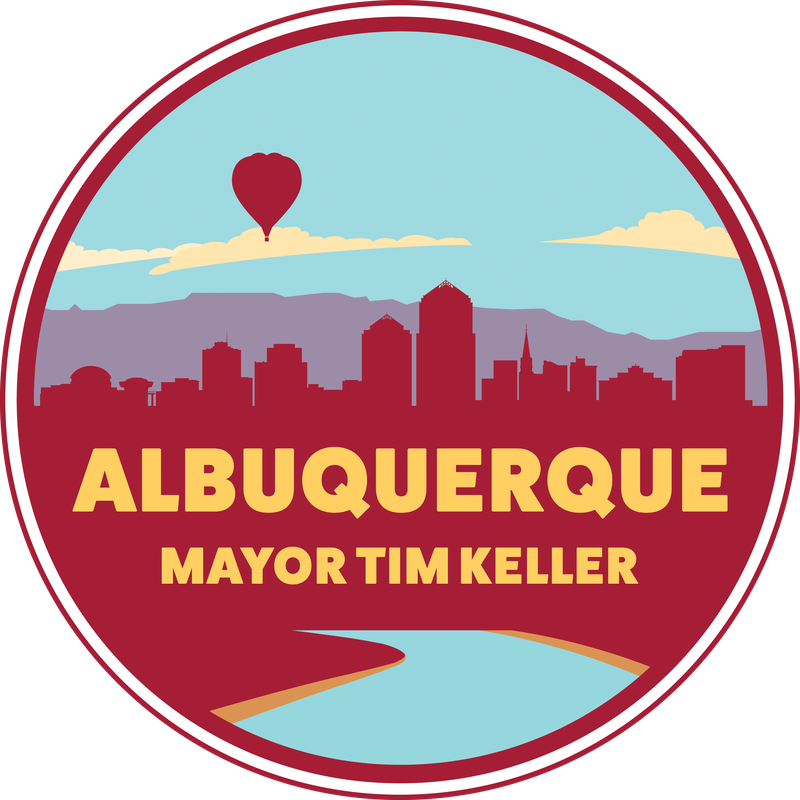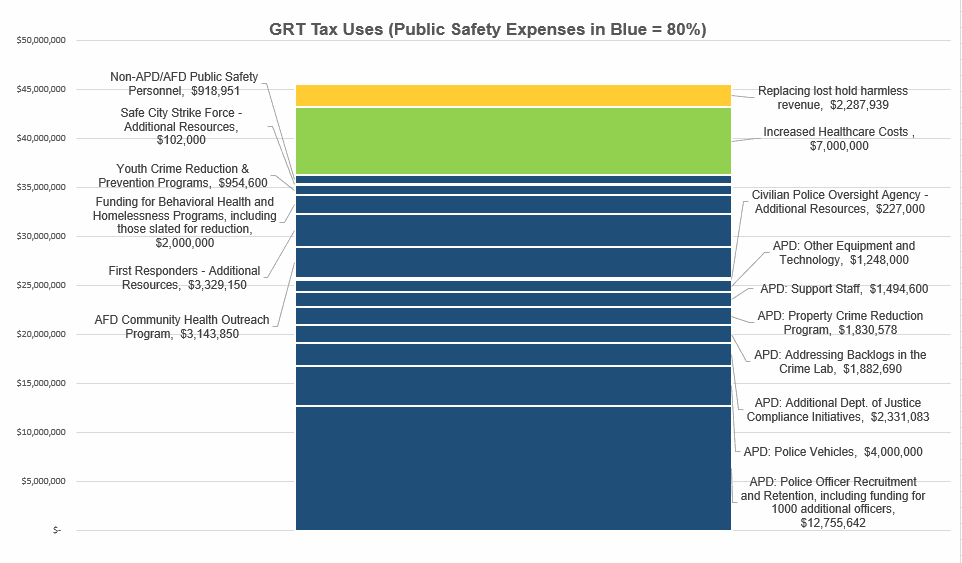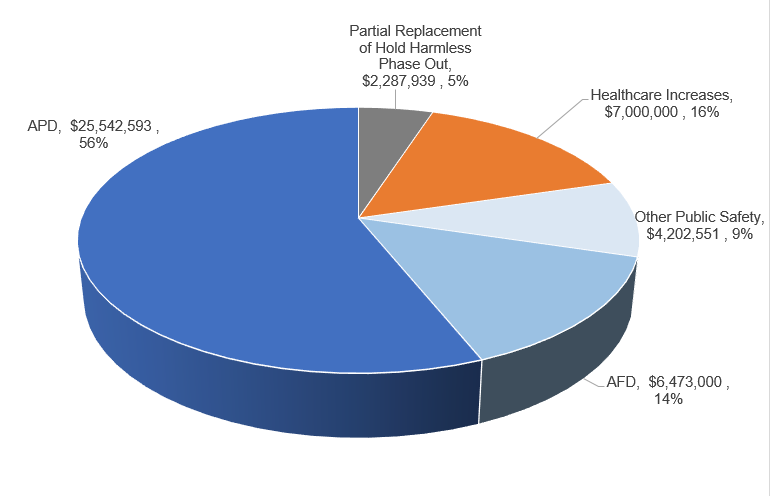
Mayor Keller’s Budget Prioritizes Public Safety
The proposed budget allocates resources to fight crime from all sides, support kids programs and spur the economy.
March 30, 2018
Mayor Tim Keller released the administration’s Proposed Operating Budget that prioritizes solutions for making Albuquerque safe, inclusive and innovative. The budget process started with a call from the Mayor to all departments to connect their budgets to public safety in order to fight crime from all sides. The budget, which will now be considered by the City Council, outlines public safety and other priorities for the next fiscal year, including:
- Recruiting efforts to hire 100 new officers in the coming fiscal year, the first step towards the Mayor’s goal of hiring 400 officers over four years. New officers will help address shortfalls in every area command, specialized units, vehicle theft operations, detectives, and the Safe City Strike Force.
- Funding the tools our police officers need to fight crime and implement constitutional policing such as $4 million for replacement of outdated equipment and $1.8 million for the Property Crime Reduction Program.
- $1.8 million to address backlogs at the crime lab, including the over 4,000 untested sexual assault evidence kits and the 16-month processing time for latent fingerprints.
“The city’s budget is a statement of priorities,” stated Mayor Keller. “We are focused on tackling crime from all sides and working with communities to make our neighborhoods and businesses safer. We prioritized three key areas: addressing crime from all sides, such as hiring more officers and processing rape kits and fingerprints to get offenders behind bars; bolstering learning opportunities for our kids; and supporting local business development.”
Attacking Albuquerque’s crime epidemic must also include efforts to address behavioral and mental health, homelessness, jobs and the economy, and opportunities for children. The proposed budget includes:
- $3.2 million to develop the Mobile Integrated Healthcare and Community Outreach Program, a targeted care program for indigent and distressed populations that makes better use of public safety resources and delivers effective specialized care into neighborhoods.
- $15 million in affordable housing contracts and $8.2 million in homeless service, transitional housing and emergency shelter, funded in the budget and through grants, to provide non-officer, service-based responses to homelessness.
- Funding of the Economic Development Department’s core programs, including supporting local businesses, aligning expenditures to keep tax dollars in our local economy instead of flowing out-of-state, and recruiting new businesses.
- Doubling access to successful before-school, after-school and summer programing to keep kids off the streets and out of harm’s way.
“The economy and the public safety crisis are intertwined,” stated Chief Administrative Officer Sarita Nair. “Economic growth can only happen in a community that has taken control of its public safety problems and provides a vibrant environment to nurture, retain and attract businesses.”
This year’s expenditures are filling the gaps that were created during the structural deficit to keep services at a reasonable level and address the public safety crisis. Of the new GRT that is expected to be collected starting in July, 80% is allocated towards public safety. The council has until the end of May to review, amend and adopt the budget.
“It’s time for action,” Mayor Keller added. “We look forward to working with the City Council to focus resources on our city’s most urgent needs to get serious about tackling the public safety crisis, growing the economy and standing up for our kids.”
Read the previous memo on the structural deficit here and see charts from the proposed budget below.



